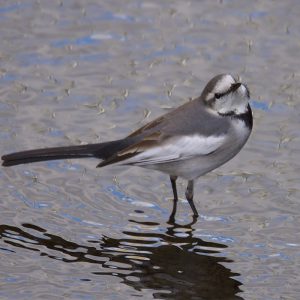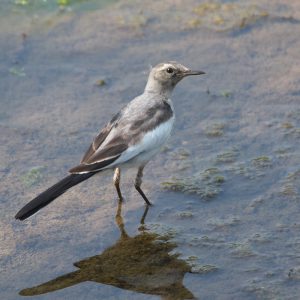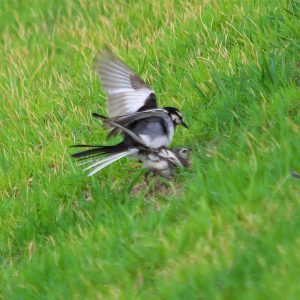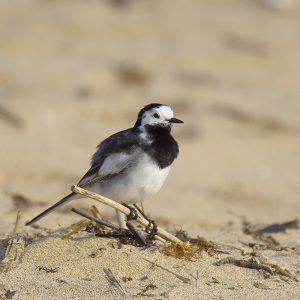むなかたが集まる
電子データベース
電子データベース
ハクセキレイ
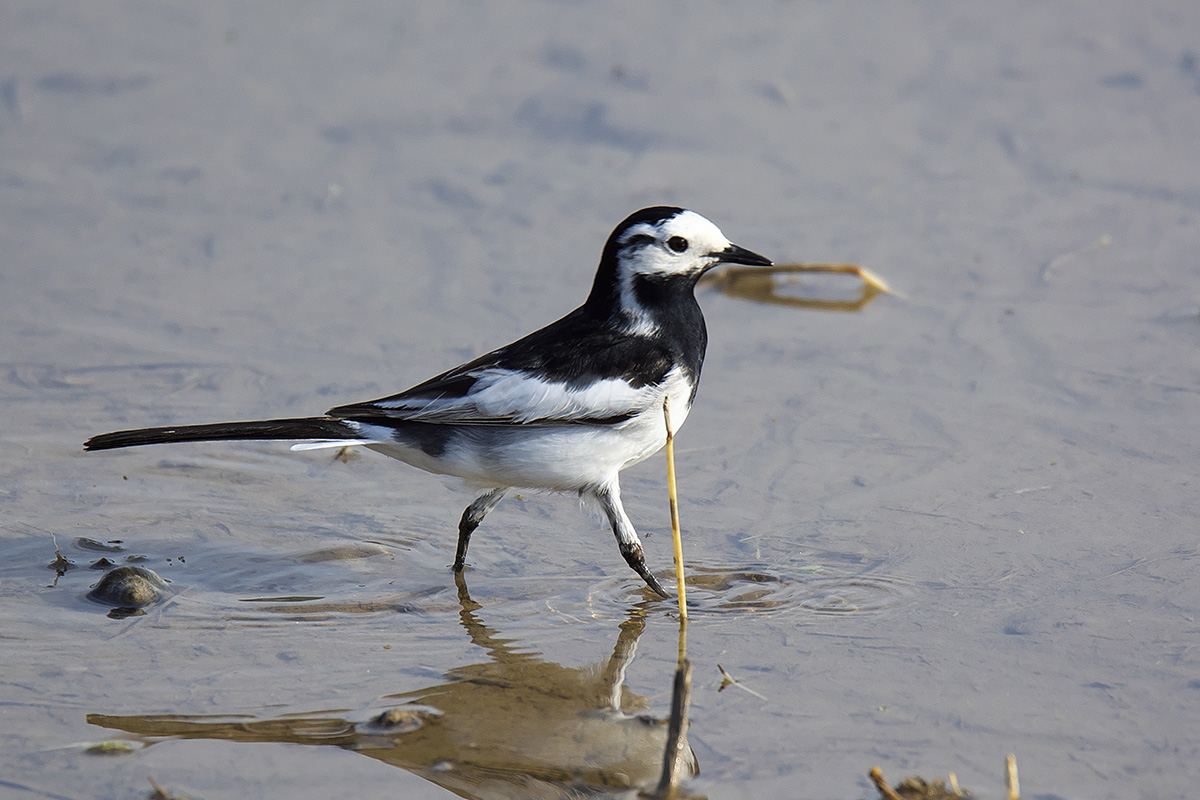
| 種目 | ハクセキレイ (白鶺鴒) | 分類 |
スズメ目 セキレイ科 セキレイ属 |
学名 | Motacilla alba | 英名 | White Wagteil |
|---|---|---|---|---|---|---|---|
|
ハクセキレイ (白鶺鴒) |
スズメ目 セキレイ科 セキレイ属 |
Motacilla alba | White Wagteil |
宗像市でみられる場所・時期
宗像では留鳥で,市内全域の水辺を中心に一年中見ることができる。
特徴
全長21㎝。スズメより大きい。
雄の夏羽は,額から眉斑,腮から頬が白色で,頭頂から体上面は黒色。黒い過眼線があるものとないものがいる。胸から側頸は黒く,翼は白く,一部に黒色部がある。尾は黒色で,外側が白い。
雌の夏羽は,背が灰色がかる。額の白色部は雄より狭い。嘴と脚は黒い。
国内では七種類の亜種が記録されている。
習性
海岸,河川,農耕地などに生息する。繁殖期以外は一羽,又は小群で行動する。尾羽を上下に振りながら,主に水辺や農耕地を歩き,昆虫やクモ類などを食べる。
「チュチュン」などと鳴き,「チュイチュイ」などと囀る。
分布
留鳥または漂鳥として北海道から九州の平地から山地の海岸,河口,河川,農耕地,都市部の公園,人家周辺,山間部の集落などに生息する。以前は北海道のみで繁殖していたが,近年本州中部まで繁殖域を広げ,西日本でも繁殖している地域が出現している。
冬になると南下し,都市部の街路樹や橋の下,河畔林などにねぐらを持つ。
ユーラシア大陸,アフリカ大陸北部,インド亜大陸,フィリピン,インドシナ半島に生息する。
その他
セグロセキレイ,ハクセキレイの2種について,国内で広く姿が見られていたのはセグロセキレイの方で,ハクセキレイは東北地方以北の海岸で主に繁殖していた。それがここ100年の間に南下してきた。宗像でも繁殖していると考えられる。
古事記の「国生み神話」に出てくる鶺鴒は,セグロセキレイであると言われている。
 はじめに
はじめに お問い合わせ
お問い合わせ